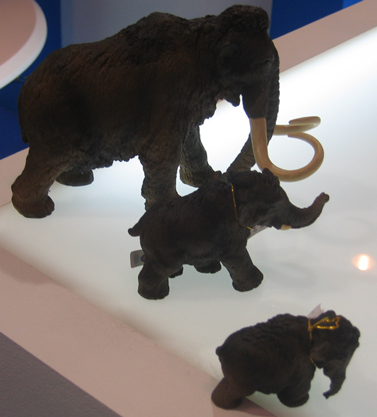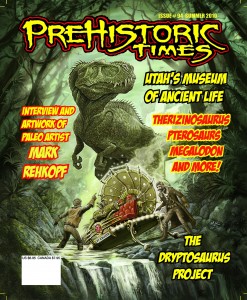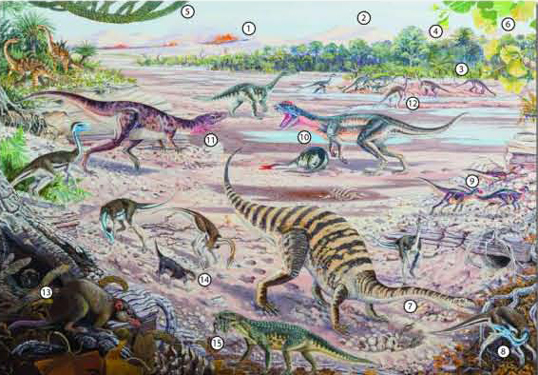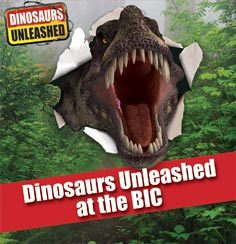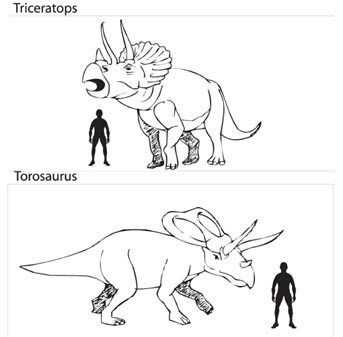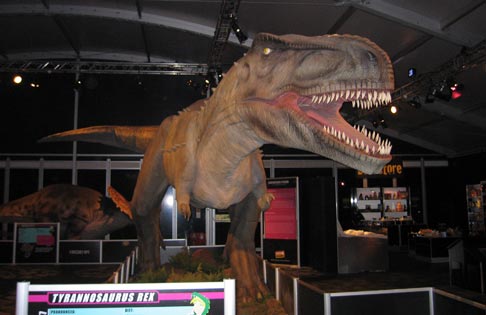Cool Dinosaurs – Mojoceratops
New Species of North American Ceratopsian – Mojoceratops
One of the fascinating aspects of vertebrate palaeontology is looking into the origins of the scientific names given to species. Whilst the ceratopsians are currently in the spotlight with controversial theories being put forward as to the validity of Torosaurus latus and with the publishing of a comprehensive guide to horned dinosaurs (New Perspectives on Horned Dinosaurs: The Royal Tyrrell Museum Ceratopsian Symposium), it is worth reflecting on one of the more unusual of their kind – Mojoceratops.
Mojoceratops
Mojoceratops, a new genus of chasmosaurine (horned dinosaur with a long-neck shield and with brow horns usually bigger than the nose horn), was named after its flamboyant heart-shaped neck frill. The name that was blurted out by the discoverer, Nicholas Longrich (postdoctoral associate at Yale University) after a few beers with colleagues has stuck, after all, it is very appropriate as Dr Nicholas went onto explain.
“It was just a joke, but then everyone stopped and looked at each other and said, wait that actually sounds cool.”
Pictures show a ventral (side) and anterior (front view) of the skull of this newly discovered horned dinosaur. The fossils were found in the Dinosaur Provincial Park (Alberta, Canada) and have been dated to the Late Cretaceous, approximately 75 million years ago (Campanian faunal stage). The ornate epoccipitals (bony growths around the edge of the frill) are very prominent and the two holes in the crest were probably covered in skin when the animal was alive. The skull and crest are very similar to the fossilised remains of another Dinosaur Provincial Park resident Chasmosaurus russelli.
A Spectacular Neck Frill
The neck frill would have looked very spectacular when this dinosaur stomped around western Canada 75 million years ago, the crest may have been used for visual communication amongst herd members, perhaps to ward off rivals or to attract a mate. Researching into the origins of the word “mojo” Dr Longrich discovered that the joke name that he had thought of on the spur of the moment is very appropriate.
He commented:
“I discovered that “mojo” is an early 20th Century African-American term meaning a magic charm or talisman, often used to attract mates. This dinosaur probably used its frill to attract females (or males if this is a female), so the name makes sense”.
The specific name published in the scientific description earlier this month is Mojoceratops perifania. The species name is Greek meaning “pride”, all advanced ceratopsians known in the fossil record had frills on the top of their skulls and whilst animals such as Triceratops may be more famous, it seems that Mojoceratops had the most ostentatious frill known to date.
Dr Longrich got his first clue that he might have found a new species at the American Museum of Natural History (New York), where he was studying the dinosaur fossil collection in 2008. There, he found a distinctive frill that didn’t match anything previously known. Later, while sketching the skull of another specimen on display, which was thought to be a species called Chasmosaurus, he noticed the skull was identical to the one on the specimen next to it.
He explained:
“I realised the skull on the supposed Chasmosaurus must have been a reconstruction.”
Examining the Skull
When he examined the skull closely Longrich noticed some subtle differences from the Chasmosaurus holotype, including longer horns. Investigations carried out at other museums with ceratopsian fossil collections turned up more examples that did not fit the Chasmosaurus holotype. Expressing surprise at the discovery of a new genus of horned dinosaur amongst fossil collections that have been extensively studied Nicholas added:
“The fossils we were studying didn’t look like anything we had seen before. They just looked wrong.”
According to Longrich, finding yet another previously unknown large dinosaur species in the Dinosaur Provincial Park area, a part of the world that boasts the world’s most diverse dinosaur fauna, is a little surprising, especially since the area has been so closely studied.
He commented:
“So far, we really have no good explanation for why there are so many dinosaurs in the area and how they managed to coexist.”
The unique geology of the Dinosaur Provincial Park may explain why so many vertebrate fossils have been found in that part of the world. It was certainly a lush habitat but an explanation of the large numbers of dinosaur fossils, especially the extensive bone beds has recently been proposed – this prehistoric coastal area was hit from time to time by ferocious tropical storms.
To read more about this theory: Northern Alberta Centrosaurine Bonebed.
All in all, Longrich turned up eight partial skulls of the new species, which now boasts a name with just as much flair as its unusually shaped skull. However, with all the reclassification of horned dinosaurs going on at the moment coupled with more recent studies into Dinosauria ontogeny (growth rates), it may be just a matter of time before Mojoceratops gets reclassified.
For replicas and figures of Late Cretaceous horned dinosaurs: PNSO Horned Dinosaur Models.


